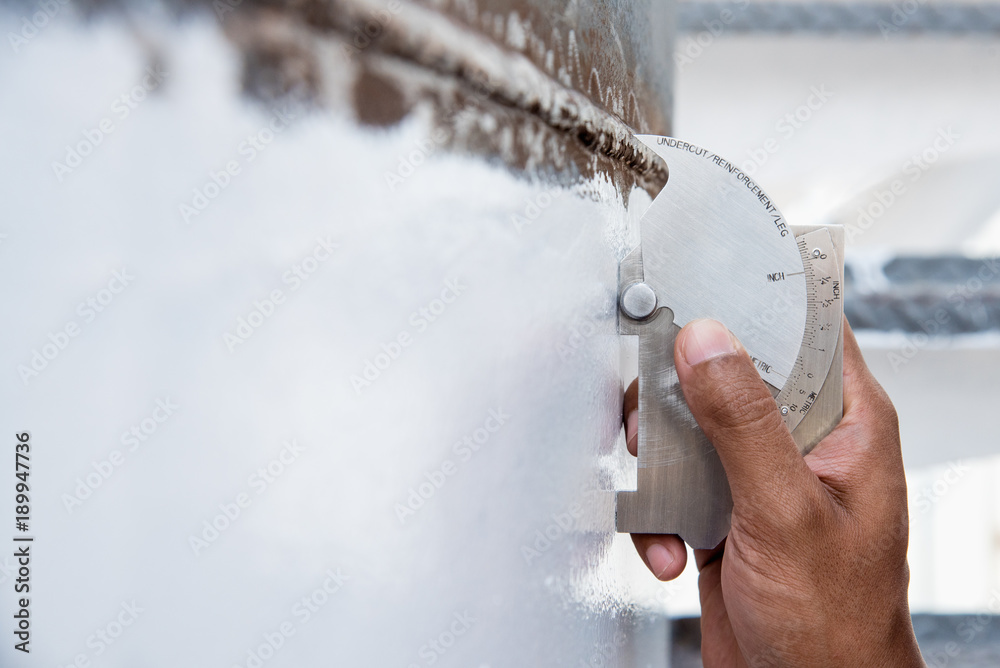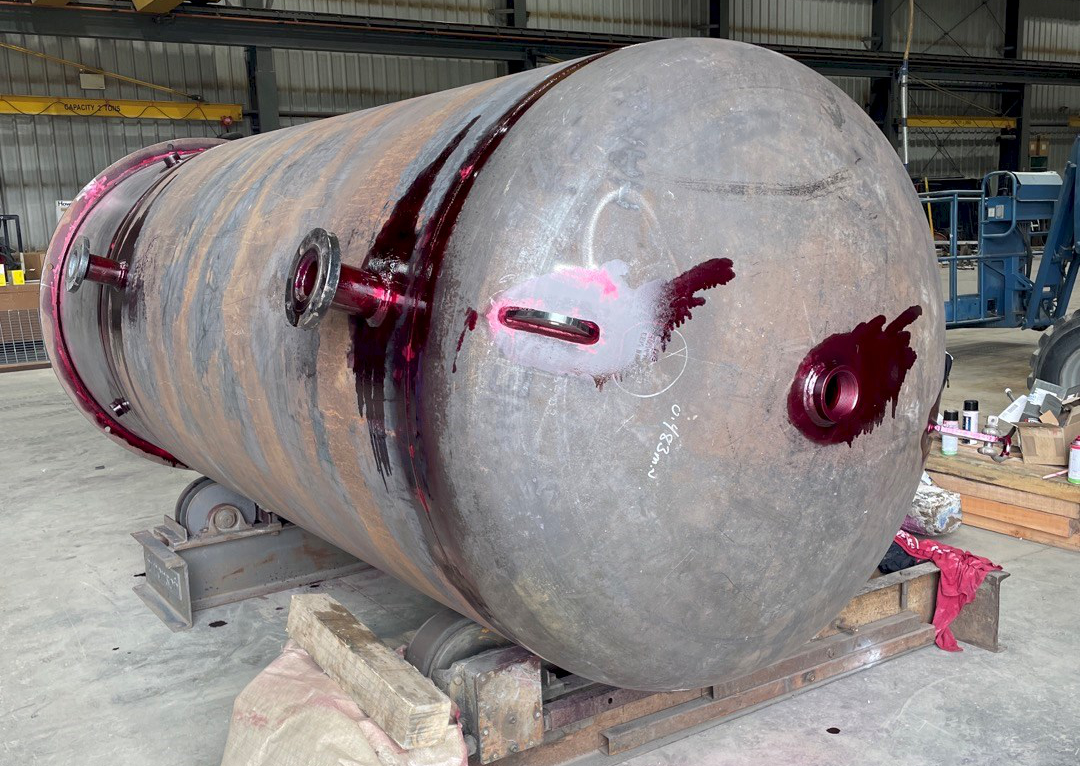Comprehensive Overview to Effective Container Welding Assessment Techniques and Best Practices for Quality Assurance
In the realm of storage tank welding, strenuous assessment strategies are paramount for protecting structural stability and ensuring compliance with sector regulations. This overview provides an organized approach to different assessment techniques, consisting of visual assessments and non-destructive testing, which play a crucial function in identifying imperfections prior to they rise into major problems. In addition, the value of careful documentation and the application of continual enhancement practices can not be overemphasized. As we check out these essential parts, it comes to be clear that an aggressive assessment technique is not simply valuable, however crucial for functional success in settings taking care of hazardous products.
Relevance of Tank Welding Assessment

Container welding assessment functions as a preventative procedure, recognizing potential defects such as cracks, porosity, or incorrect joint infiltration before they intensify into severe concerns. Routine inspections not just abide with sector guidelines and criteria yet likewise boost the long life of the storage tanks, minimizing the demand for pricey repair work or substitutes.

Visual Assessment Methods
Employing organized visual inspection methods is critical for examining the high quality and honesty of welded joints in tanks. This approach acts as the very first line of defense in recognizing possible issues such as cracks, undercuts, and not enough infiltration. The examiner must come close to the job with a keen eye, making use of proper devices like multiplying glasses, flashlights, and mirrors to boost presence.
During the inspection procedure, the inspector needs to review the weld account, guaranteeing it sticks to defined criteria and guidelines (Tank Welding Inspection). This consists of analyzing the bead width, elevation, and fusion with the base product. Assessors must likewise pay attention to the bordering locations for signs of thermal distortion or contamination that might affect the weld's efficiency
Documentation of findings is essential; examiners must tape-record any anomalies, categorizing them by seriousness for further examination. This organized method not just aids in prompt defect identification yet likewise adds to long-term quality control by ensuring compliance with sector criteria. Normal training and calibration of aesthetic evaluation methods further boost the dependability of evaluations, inevitably resulting in safer and a lot more resilient container structures.
Non-Destructive Evaluating Techniques
Non-destructive screening (NDT) methods are frequently employed in storage tank welding evaluations to examine the stability of welded joints without jeopardizing their architectural integrity. These methods are important for recognizing flaws such as fractures, spaces, and inclusions that might bring about catastrophic failures if left undiscovered.
Typical NDT approaches include ultrasonic screening (UT), which utilizes high-frequency sound waves to find internal defects; radiographic testing (RT), using X-rays or gamma rays to picture weld structures; and magnetic bit testing (MT), which reveals surface area and near-surface interruptions in ferromagnetic products (Tank Welding Inspection). Fluid penetrant testing (PT) is additionally extensively utilized, qualified of detecting surface-breaking defects by using a fluorescent or color comparison color
Each NDT method here has its specific applications and advantages, making it important for inspectors to select the suitable method based upon the material and the kind of weld being evaluated. The integration of these NDT techniques into the inspection procedure boosts the total quality assurance structure, making sure that welded tanks fulfill security and efficiency requirements. Eventually, NDT plays a critical duty in keeping the integrity and longevity of container frameworks in numerous industrial applications.

Documentation and Coverage
Guaranteeing extensive paperwork and coverage during container welding assessments is critical for preserving compliance see page with market criteria and facilitating reliable interaction amongst stakeholders. Appropriate documents acts as an extensive document of inspection activities, findings, and any kind of restorative activities taken throughout the welding procedure. This information is essential not only for quality control yet likewise for audits and regulatory testimonials.

A well-structured assessment record need to include information such as the date of assessment, names of inspectors, welding treatments employed, materials utilized, and any type of variances from established criteria. Furthermore, photographs and diagrams can improve the clarity of the record, offering aesthetic context to the findings. It is likewise crucial to record any non-conformities together with their resolution, making certain that all stakeholders are informed of possible risks and the actions required to alleviate them.
Additionally, keeping a centralized data source for all evaluation records enables very easy access and evaluation, promoting a culture of openness and accountability. By prioritizing thorough documentation and coverage, companies can not only maintain quality control but likewise enhance their track record within the market, inevitably causing boosted safety and functional efficiency.
Continuous Enhancement Practices
Constant renovation practices are necessary for enhancing the high quality and effectiveness of tank welding evaluations. Executing a methodical technique to evaluate and fine-tune examination methodologies cultivates a culture of quality control within the company. One effective approach entails normal training and upskilling of assessment workers to remain abreast of the current welding innovations and criteria. This ensures assessors possess the needed expertise and skills to determine defects accurately.
Additionally, utilizing data-driven evaluation allows companies article source to track examination outcomes, identify trends, and determine locations for renovation. Utilizing tools such as origin evaluation can help in understanding the underlying issues resulting in defects, enabling targeted interventions. In addition, soliciting comments from examination groups and stakeholders produces a collaborative atmosphere that encourages innovative services.
Including innovative innovations, such as automated assessment systems and real-time monitoring, can dramatically enhance the accuracy and rate of assessments. Regular audits of the evaluation processes likewise add to a culture of responsibility and continuous improvement. Ultimately, these constant enhancement techniques not only elevate the top quality of tank welding examinations yet additionally add to overall operational excellence and customer contentment.
Conclusion
In verdict, reliable storage tank welding examination is critical for ensuring the structural honesty and safety and security of storage systems, specifically those managing dangerous products. Employing a combination of visual assessment techniques and non-destructive screening techniques promotes the early identification of defects, consequently preserving conformity with industry requirements.